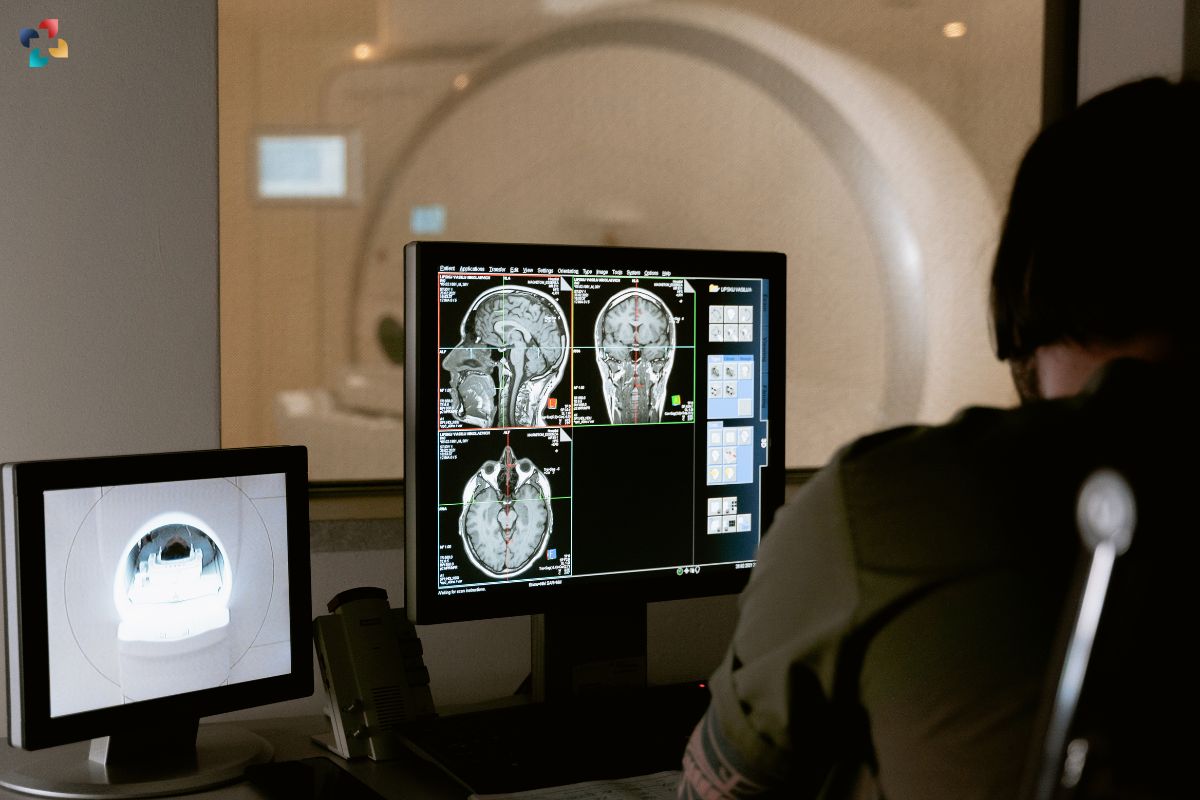What is Molecular Imaging?
Assume having been carrying a small, invisible camera that can zoom in on the most minute details of the body, showing its internal workings like never before. That is the wonder of molecular imaging!
Molecular imaging is an advantage for physicians and scientists. Instead of only viewing the surface of the body, they may look within at the molecular level. How awesome is that?
This is how it works. Scientists utilize specific cameras and sensors to identify small particles known as “tracers.” These tracers are like small detectives that look for certain substances in the body, such as proteins or enzymes. When they reach their target, they turn on like neon lights, allowing scientists to see precisely where they are and what they’re doing.
However, molecular imaging is more than just taking lovely photographs. It’s an effective tool for identifying illnesses, following how they develop, and determining the best therapies.
For example, suppose someone develops cancer. Molecular imaging allows doctors to use tracers to identify exactly where cancer cells are hidden and how they behave. This allows them to determine the most effective treatment approach, whether it is surgery, chemotherapy, or something else completely.
But that is not all! Molecular imaging also helps scientists build new treatments and cures. By seeing how tracers work with various chemicals in the body, they might gain a better understanding of how illnesses function and find clever strategies to stop them. Hence, if you’re seeing inside a beating heart, hunting down cancer cells, or discovering the mysteries of the brain.
What is Radiology?
Radiology is like an incredible view of the human body. Instead of looking through glass, radiologists utilize specific equipment and procedures to view inside without ever touching a scalpel. It’s like having an enclosed discovery map that reveals all of the hidden queries.
Consider your body as a captivating residence full of secrets. Radiology is the key to understanding its questions. It uses many imaging techniques to make images of the body’s bones, organs, and tissues, supporting clinicians in diagnosing and treating a wide range of disorders.
X-rays are one of the oldest and most well-known instruments in the radiologist’s portfolio. They’re like laser beams that can travel through the body, capturing photos of bones and identifying fractures or consumed items.
CT scans are like going through a maze. They take many X-ray images from multiple perspectives and combine them to generate detailed 3D views. It is ideal for detecting hidden defects like as tumors or bleeding in the brain.
An MRI is like an enchanted book that discloses the body’s deepest secrets. It produces pictures of soft tissues such as muscles and organs using strong magnets and radio waves rather than X-rays. It’s excellent for finding things like damaged tissues and brain difficulties.
Ultrasound is like a soft flow that moves through your body. It employs sound waves to provide real-time pictures of organs such as the heart and liver. It is commonly used during pregnancy to observe the baby’s growth or to detect issues such as kidney stones.
Nuclear medicine has become an adventure. It involves injecting a small amount of radioactive material into the body and then measuring its progress using special cameras. It is used to diagnose illnesses like cancer and heart problems.
Under the hands of expert radiologists, these technologies act like miracle instruments, disclosing the body’s secrets and leading doctors to the best methods to keep it healthy and happy.
New developments in molecular imaging
Following are some developing concepts that are disclosing ways forward in the field of molecular imaging.
1. Intelligent devices
Consider molecular sensors that serve as alert guards, able to detect even the smallest changes in the body’s biology. These smart sensors, having molecular identification skills, can identify indicators or signaling molecules linked to illness with extraordinary accuracy and specificity. Whether it’s a small pH change or the presence of illness-related proteins, these sensors flash like indicators, directing scientists to new insights into health and disease. It’s like having a quiet guarding the body’s secrets and sounding the alarm at the first indication of tragedy.
2. AI-powered observations
Discover the world of artificial intelligence, where algorithms and data come together to reveal new levels of knowledge from molecular pictures. AI-powered analysis provides an innovative approach to picture analysis by filtering through huge quantities of data with remarkable quickness and accuracy. Whether it’s spotting minor patterns or predicting illness development, artificial intelligence systems are helpful guides, revealing the route to new discoveries and advances. It’s like having an intelligent buddy who filters through the sands of knowledge, discovering hidden nuggets of information that excite the imagination and drive creativity ahead.
3. Complex Imaging
See an area where pictures pop out of the screen in bright 3D, advising us to look into the inner workings of the human body. Complex imaging methods, such as volumetric imaging or time-lapse microscopy, provide an evolving perspective of biological processes by recording the movement of life in action. It’s like taking a tour through a living, breathing picture of cells, tissues, and organs, with each picture telling an account of development, change, and adjustment.
4. Evolving radiology practice
See the ever-evolving world of radiology, where history meets innovation, and each scan offers an account of growth and advancement. As technology progresses and new discoveries transform the healthcare environment, radiology practice evolves in surprising and fascinating ways.
One of the most obvious developments in radiology practice is the shift to digital imaging. Film-based X-rays and darkrooms are no longer used; instead, pictures are taken and stored digitally, providing easy access, faster analysis, and easier exchange across physicians. It’s like shifting from a dusty old book to a modern, smart tablet, with information available whenever and wherever you need it.
Another advance that is shaping the future of radiology is the rise of artificial intelligence (AI). Consider having a digital assistant that can analyze photos, detect problems, and predict patient outcomes with rapid speed and precision. AI algorithms are revolutionizing radiology practice by boosting radiologists’ expertise, allowing them to analyze pictures more effectively and make better judgments regarding patient care. It’s like having a trusted companion at your side, confidently yet accurately directing you toward the right course of action.








